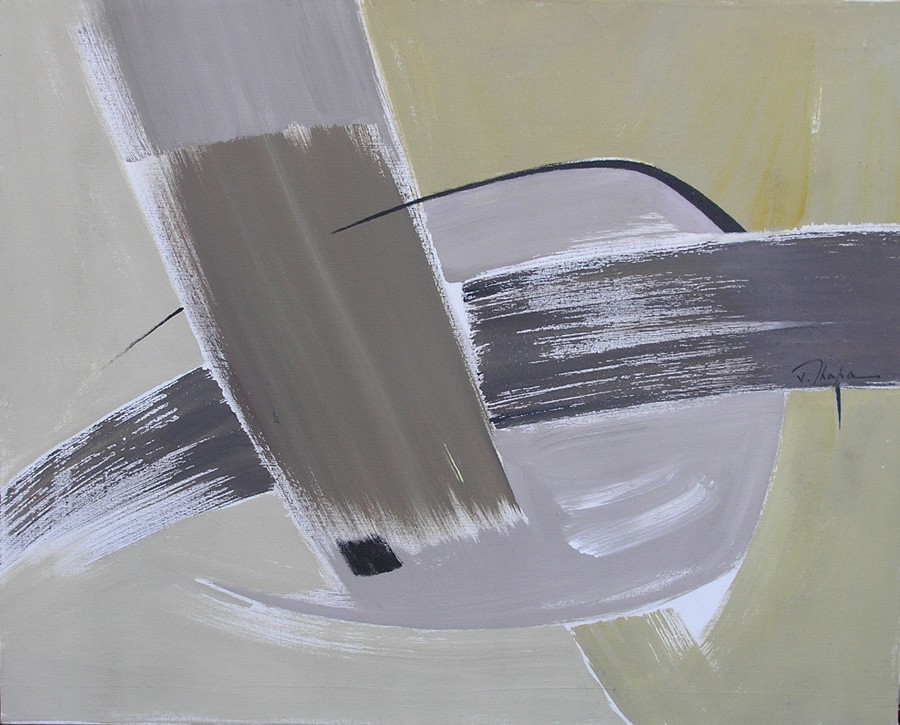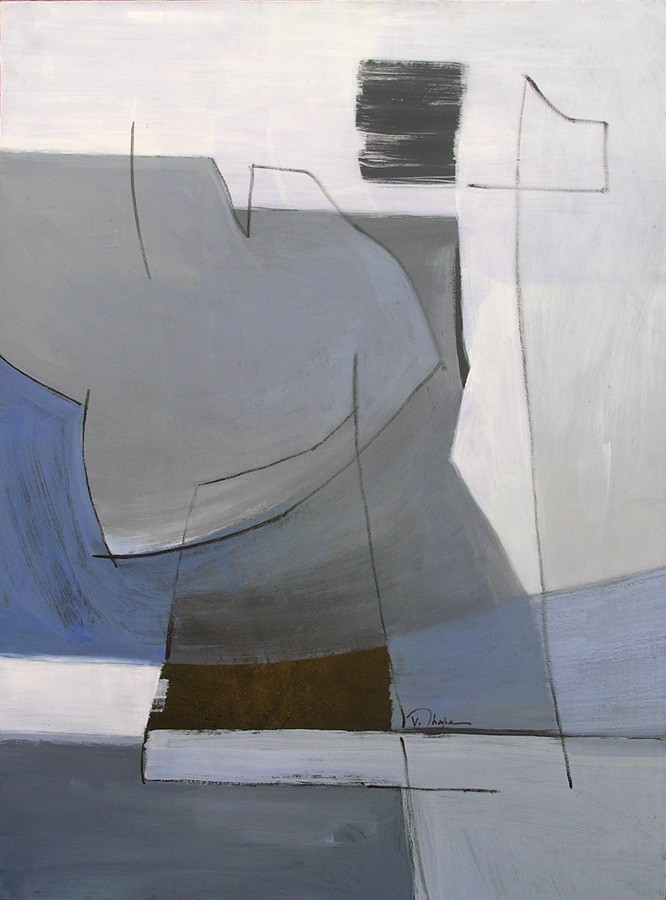Vijay Thapa

Vijay Thapa depicts social conflict and suffering human figures in his impressionist and cubist paintings. Like impressionists, he plays with light and shade in his canvas. His works are influenced by geometric forms of Cezanne and Picasso. His works depict tortured, anxity-ridden, disillusioned and rebellious human figures. In his paintings, he creates balance between native Nepali elements and modern techniques, concrete and abstract images, and warm and cool colours. He also depicts conflict between good and evil forces of the society, and suggests the victory of spiritual power through the symbolic forms.
Vijay Thapa depicts social conflict and suffering human figures in his impressionist and cubist paintings. Like impressionists, he plays with light and shade in his canvas. His works are influenced by geometric forms of Cezanne and Picasso. His works depict tortured, anxity-ridden, disillusioned and rebellious human figures. In his paintings, he creates balance between native Nepali elements and modern techniques, concrete and abstract images, and warm and cool colours. He also depicts conflict between good and evil forces of the society, and suggests the victory of spiritual power through the symbolic forms.
Thapa’s works also depict the social ironies of contemporary Nepali society by exploiting some aspects of cubist and expressionist techniques. Breaking the linear surface of the objects, the artist suggests the depth through the use of geometric forms like circle, triangle, rectangle and parallelogram. He presents the various layers of reality at once.
“He has combined certain colours and lines in his paintings to generate intense emotional feelings, aspirations, innocence, complexities of life, natural and unnatural impacts of joy and sorrow upon life. His paintings not only centre entirely around social life in different dimensions but also reflect rays of hope and humbly warn against evils that are rampant in the world.” Thapa’s works revolt against socio-political corruption and domination.
The artist subverts the traditional icons and symbols and parodies the conventional significance. The expressionist colours speak equally well as the distorted images. Breaking linear form of the objects, the artist presents the layers of social reality through the use of geometric shapes.
Vijay Thapa creates the abstract forms. In such art works the forms and colours refer to themselves. The artistic form is its own significance. The viewers need not associate their feelings with the objects and events of the external world. Thus, they have spots of time, epiphany and the presentational immediacy.
Date of Birth : 1943, Nawalparashi, Nepal
Education :
BFA, Banaras University, India-1965
BA Culture, Tribhuvan University, Kathmandu, Nepal
Solo Shows:
17th Solo Shows in Nepal and Abroads
Selected Group Shows in Japan, China, India, Russia, Bangladesh, Korea, Tibet, Nepal
Awards :
1970 : Best Painting, International Art Exhibition, NAFA
1970 & 1975 : Doshallas
1980 : First Prize, National Art Exhibition, NAFA
1999 : Rastriya Pratibha Puruskar
2001 : Suprabal Gorkha Dakshin Bahu
Position :
1960-1977 : Treasurer-Nepal Association of Fine Arts, NAFA
1977-1981 : Advisor- Nepal Association of Fine Arts, NAFA
1997-2004 : Reader-Lalit Kala Campus
1999-2004 : Academician-Member, Nepal Academy
2010 : Academician-Essemblt Member, Nepal Academy of Fine Arts
Activities :
1962 : Tutor (Painting) – Late King Birendra
1970-1976 : Chief Editor-Kalakar, Fine Arts Magazine
1999-2000 : Chief Editor-Akriti, Fine Arts Magazine
1982 : Portrait Paintings-Prime Ministers of Nepal for Prime Minister’s Office, Singh Durbar




